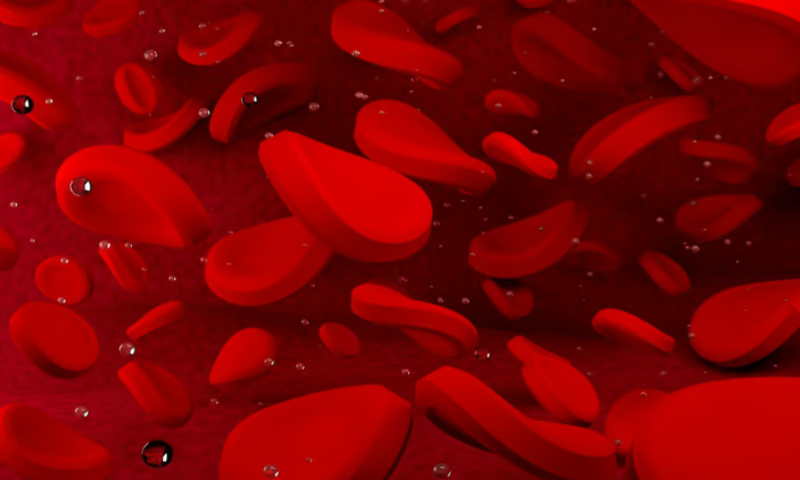While hemophilia has soaked up clinical attention and investor dollars for decades, it’s come at the expense of a range of intriguingly named but less well-known blood clotting disorders. That’s where Hemab Therapeutics comes in.
The Denmark and U.S.-based biotech has just secured $135 million in oversubscribed series B funds to accelerate work on monoclonal and bispecific antibodies that it believes could offer the first “functional cures” for the likes of Glanzmann thrombasthenia and von Willebrand disease.
The latest funds will be used to drive Hemab’s so-called “1-2-5” strategy, which will see the biotech try to get five clinical assets into the clinic by 2025.
One of these, dubbed HMB-001, is already in a phase 1/2 trial for Glanzmann—a rare inherited clotting disorder—with an initial readout expected in the second half of this year. One arm of HMB-001 binds to endogenous factor VIIa already present in the patient’s bloodstream, while the other binds to the TREM-like transcript 1 receptor present on the surface of the activated platelet.
“It endows endogenous clotting proteins with the half-life of an antibody,” Hemab CEO Benny Sorensen, M.D., Ph.D., told Fierce Biotech in an interview.
Coming up behind is HMB-VWF, which Hemab is preparing to enter into its own phase 1/2 trial in von Willebrand disease next year. While HMB-VWF targets von Willebrand factor and other upcoming candidates in Hemab’s portfolio will also target different proteins to FVIIa, “this idea of antibodies that can leverage endogenous clotting proteins to correct abnormalities in blood clotting is a common denominator” across the company’s pipeline, he says.
If approved, these treatments would be “completely game changing,” Sorensen says. While treatments for hemophilia A and B have been on “an amazing biotech journey” from blood transfusions in the 1950s to bispecific antibodies and gene therapies today, the bleeding conditions Hemab is targeting have suffered “70 years of stalled innovation,” he says.
“The intent of the company is to leapfrog treatment options for these people into the 21st century, giving them, with our first asset, a bispecific antibody that is super convenient, subcutaneously administered infrequently,” he adds. “A treatment that doesn’t work on stopping a bleed, but preventing bleeds.”
Hemab was set up to resolve the very reason these lesser-known conditions have not received enough attention in the past—a shortage of teams with deep expertise in clotting biology. “We have 15 people [who] have been involved with more than 50% of all the drugs in this space,” says Sorensen. “So we’ve been there, we’ve done that.”
That includes Sorensen himself, who has previously served as an associate professor of thrombosis and hemostasis at Denmark’s Aarhus University while heading up Alnylam’s hemophilia programs. “I have a 10-year clinical academic career, it’s all been in [blood] clotting,” Sorensen says.
It was at Alnylam where he worked under the company’s former CEO John Maraganore, Ph.D., who has acted as a mentor ever since and now sits as chair of Hemab’s board of directors. “Clotting is actually something that’s really near and dear to John,” says Sorensen, who pointed out that Maraganore invented the anticoagulant Angiomax while at Biogen.
“If you really want to win, you’ve got to pick a winner to help guide you along,” he adds. “And that’s John.”
While originating in Denmark, currently only 30% of the biotech’s 15-person workforce is based in the company’s Copenhagen offices, with most of the remainder based in Boston. Part of the funding will go toward doubling Hemab’s head count, with employees distributed more evenly between the two centers.
Some of the conditions the biotech is focused on, such as Glanzmann, are rare diseases with relatively small patient populations. “But if you look at Hemab’s range of disorders we are targeting, the totality of these are actually bigger than the total opportunity of hemophilia A and B,” Sorensen points out.
Investors have clearly seen the potential, first gathering $55 million in a series A in 2021, and then the latest $135 million haul. They include the likes of Denmark’s Novo Holdings—which led the first round and has long-term experience in blood disorders via Novo Nordisk—and Access Biotechnology, which led the latest round.
“Regardless of market challenges, if you come with really clearly defined, deep unmet need, solid science and an accomplished team that actually deliver what we promise—that has excited investors,” Sorensen says.

